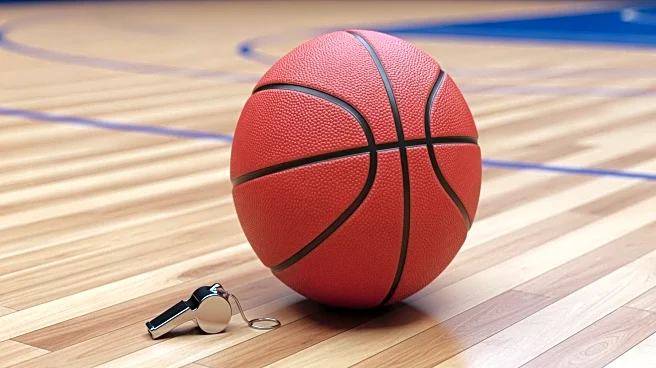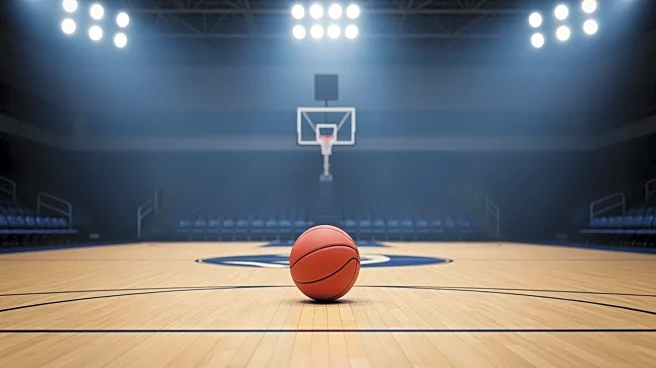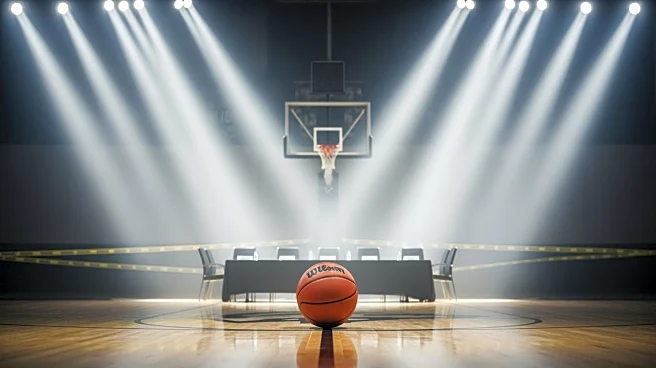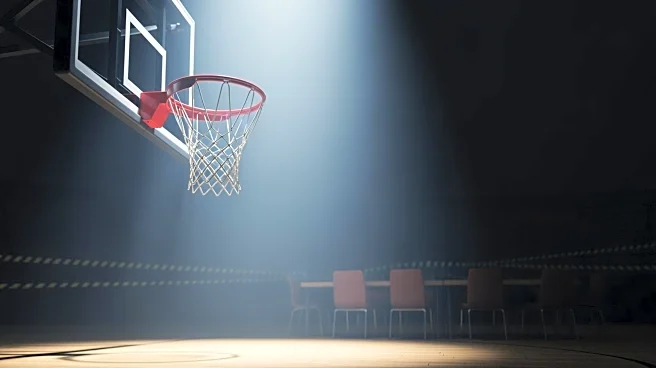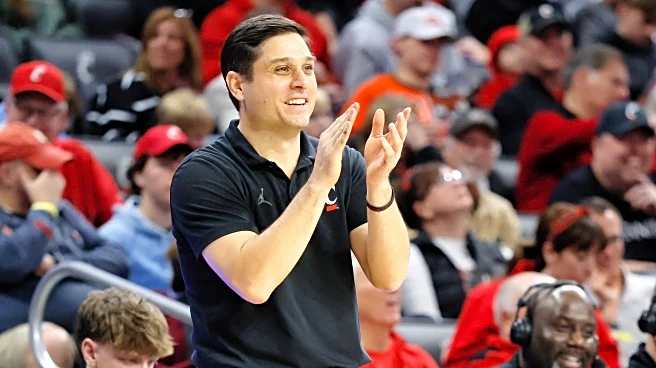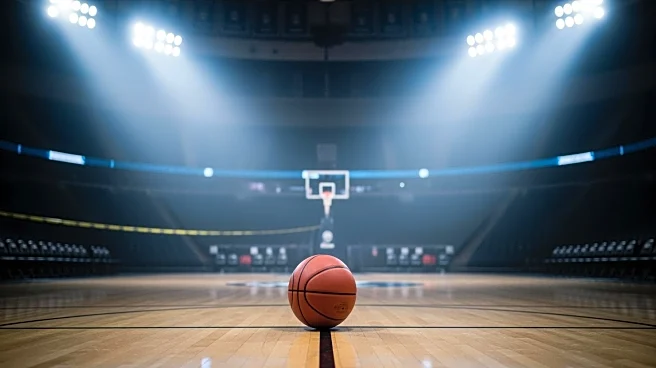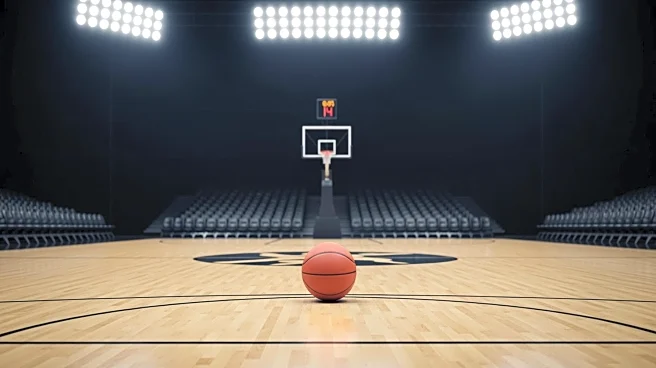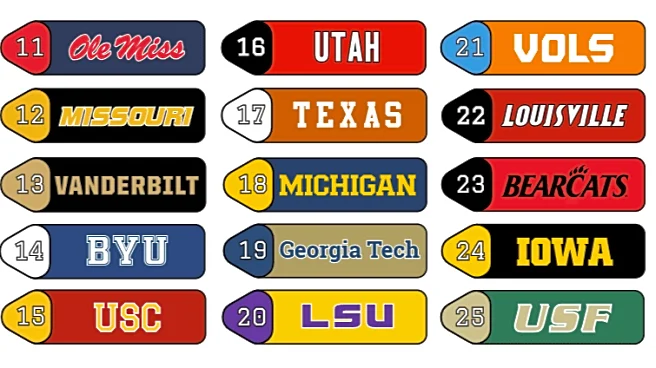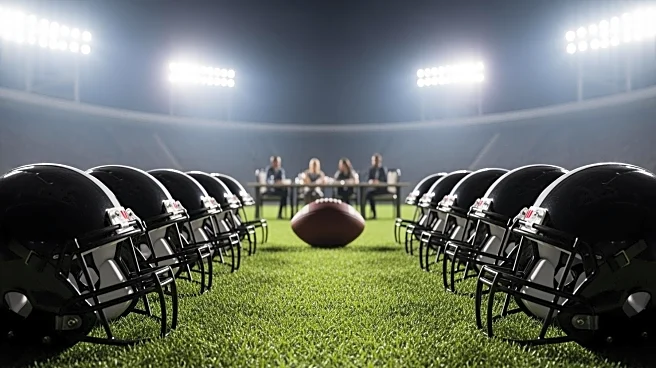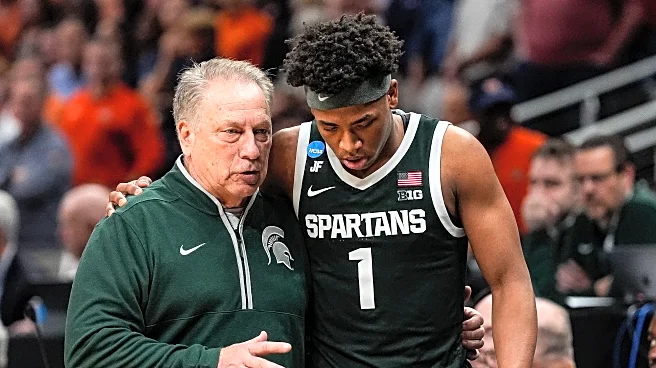What's Happening?
Michigan State coach Tom Izzo has expressed strong disapproval of the NCAA's decision to allow former G League players to commit to Division I schools. This development follows the recent commitments of London
Johnson to Louisville and Thierry Darlan to Santa Clara, both of whom have professional experience in the G League. Izzo criticized the NCAA for not consulting with college coaches before making such decisions, which he believes undermine the integrity of college basketball's amateurism rules. The NCAA's previous stance barred players who had competed professionally from participating in Division I basketball, but recent exceptions have been made, particularly for international players. Izzo argues that this shift could disrupt the traditional college recruitment process and negatively impact high school seniors.
Why It's Important?
The NCAA's decision to allow former G League players to join college teams could significantly alter the landscape of college basketball. This move blurs the line between amateur and professional sports, potentially creating a new pipeline for talent that bypasses traditional high school recruitment. Critics like Izzo fear that this could lead to fewer opportunities for high school athletes, as college teams might prefer players with professional experience. The decision also raises questions about the NCAA's commitment to maintaining amateurism in college sports, a principle that has been central to its operations. The broader implications could include increased pressure on high school athletes to turn professional earlier, as well as potential legal challenges to the NCAA's eligibility rules.
What's Next?
The NCAA may face increased scrutiny and pressure to clarify its eligibility rules in light of these recent developments. Stakeholders, including college coaches, athletic directors, and legal experts, are likely to engage in discussions about the future of amateurism in college sports. There may also be calls for the NCAA to establish clearer guidelines and communication channels with college programs to prevent similar issues in the future. Additionally, the impact on high school recruitment and the potential for increased transfers could prompt further policy reviews.
Beyond the Headlines
This situation highlights the evolving nature of college sports in the era of name, image, and likeness (NIL) rights and revenue sharing. The NCAA's decision reflects broader changes in how athletes are viewed and compensated, challenging traditional notions of amateurism. The potential for increased legal challenges and the need for policy reform could lead to significant shifts in how college sports are governed. This case also underscores the importance of balancing opportunities for athletes with the integrity of college sports.
